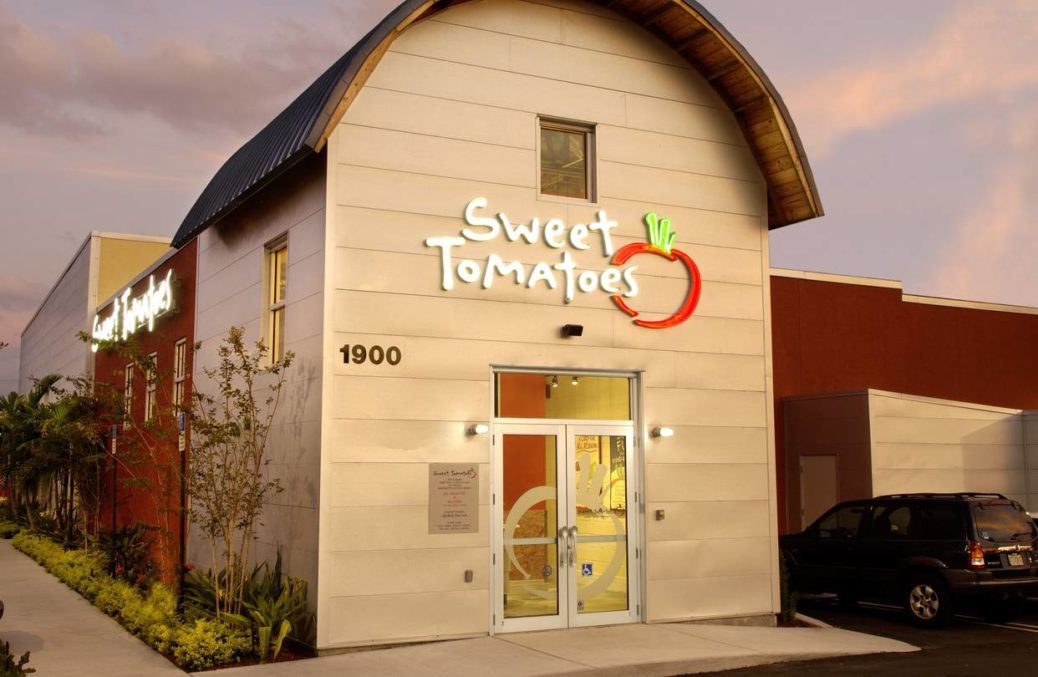Restaurant Chains Get Burned by Overexpansion, New Rivals
Glut of eateries, competitors offering prepared meals-to-go create pileup of business casualties
 ENLARGE
ENLARGEThe U.S. is having one of its biggest restaurant shakeouts in years, as an oversupply of eateries and new rivals offering prepared meals to go claim what is expected to be a growing number of casualties.
In one recent week alone, three restaurant companies filed for chapter 11 bankruptcy protection, including Così Inc.; Rita Restaurant Corp., parent of the Don Pablo chain, and Garden Fresh Corp., which operates Souplantation and Sweet Tomatoes. At least five other restaurant operators have filed for court protection this year, with restructuring plans that call for restaurant closures.
So many filings in such a short time has surprised industry experts, who say more restaurant bankruptcies or closures are likely, as well as some consolidation. Some chains have been closing locations and shaking up management. Famous Dave’s of America Inc.,which has been closing many of its barbecue restaurants, last week named its fourth new CEO in four years.
In August, Ruby Tuesday Inc. announced plans to close nearly 100 restaurants and Bob Evans Farms Inc. closed 27 restaurants in April on top of 20 it had shut down last year.
“Restaurants have been facing substantial pressures due to sales declines, as well as cost increases,” John Morberg, Garden Fresh’s chief executive, said in court papers.
 ENLARGE
ENLARGEPart of the problem is that the supply of restaurants continued to grow in past years, even when foot traffic didn’t. Between 2006 and the industry’s peak in 2014, the number of restaurants in the U.S. grew 7.3% to more than 638,000—outpacing the 6.9% growth rate of the U.S. population over that period, according to NPD Group Inc., which studies eating patterns in the U.S.
The number of restaurants has since declined to just over 624,000, with many independent restaurants shutting their doors as chains continued to expand. Meanwhile, meal-kit delivery services, such as Blue Apron, and an expanded array of prepared meals available at supermarkets and convenience stores have been taking away customers.
Darden Restaurants Inc. CEO Eugene Lee told investors earlier this month that consumers now have a lot of options for their discretionary income. “Restaurants are competing against a lot of those other choices, not just restaurants,” said Mr. Lee, whose company operates the Olive Garden and LongHorn Steakhouse chains.
Once the heaviest group of restaurant customers, 18- to- 35-year-olds have scaled back. In the past 10 years, older millennials have made 50 fewer restaurant visits per capita, according to NPD. Although people under the age of 20 are increasing their visits, they go out to eat at a far lower rate than older millennials and members of Generation X did at their peak.
Uncertainty about the outcome of the U.S. presidential election and what it might mean for the economy plays a role. But young people also have found they can save money by shopping at the grocery store, where food is at its cheapest point relative to restaurantssince the mid-1980s, according to government data. Although millennials, who have delayed marriage and having children, don’t typically fill up their grocery carts, many of them like to cook.
Madeline Keig, an 18-year-old English major at the University of Texas, enjoys making poached eggs on toast for herself, and prefers to dine in. “The experience of cooking and eating with people is really cool,” Ms. Keig said. “It’s more social, rather than just eating to eat.”
 ENLARGE
ENLARGEAs more people work from home, restaurant visits at lunchtime—once a key source of revenue for the industry—also have declined.
In addition, some chains have been struggling with heavy debt loads, said Darren Tristano of restaurant data provider Technomic Inc. “Many of them are a bad quarter away from folding, despite doing their best to improve and get by.”
Garden Fresh, Logan’s Roadhouse Inc. and Fox & Hound, a unit of Last Call Guarantor LLC, are among the chains that have cited hefty borrowings in their chapter 11 filings.
Such casual-dining chains, which offer table service, have been hit first, but industry experts predict that fast-casual chains, where customers order at the counter, will be the next victims. While fast-casual chains, many of which are matched by private investors, don’t usually carry as much debt as full-service restaurants, they have overexpanded in recent years in response to growing demand for fresher, more customizable food in contemporary settings.
“I think it’s going to be five to 10 years for the shakeout to complete. Landlords are incentivized to make it a slow unwinding. They’ll give restaurants rent reductions because it’s better than having to look for a new tenant,” said Josh Benn, managing director at corporate-finance advisory firm Duff & Phelps Corp.
Damon Chandik, managing director and head of restaurant investment banking at Piper Jaffray & Co., said, “More than ever, the industry is a case of winners and losers.”
If restaurants can’t make their offerings distinctive and compelling enough for customers, they will need to consider providing delivery service, analysts and industry executives say. Some operators are doing both. In the past two years, Darden’s Olive Garden has placed an emphasis on offering catering delivery and takeout and has been trying to appeal to millennials with meals served at pop-up communal tables around the country.
California Pizza Kitchen has remodeled its restaurants to look more upscale, broadened its menu to include shareable plates and craft cocktails and expanded its partnership with third-party delivery services.
“Off-premise dining, whether third-party delivery, pickup or catering is changing the landscape dramatically,” CEO G.J. Hart said in a recent interview.
Write to Julie Jargon at julie.jargon@wsj.com and Lillian Rizzo at Lillian.Rizzo@wsj.com






